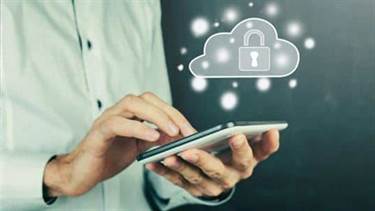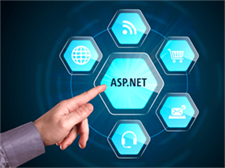Содержание
Others are more simple systems, intended to help with streamlining things like product development and supply chain tracking. The right application will allow companies to interact within a single interface and share useful information. You can even use ERP software with IoT to track sensors on assets and help with asset management. Enterprise Resource Planning software is a selection of systems and technologies designed to help companies manage and integrate core processes in the business.

This was the next major development in the history of ERP, when toolmaker Black and Decker computerized Joseph Orlicky’s MRP model in 1964. MRP was used to calculate the material and components needed to manufacture products. The offers that appear in this table are from partnerships from which Investopedia receives compensation. There are hundreds of ERP applications a company can choose from, and most can be customized.
Services Cpq
This is where some of your ERP applications and data will be in the cloud and some on premise. Cloud-based technology was born in the last decade and developed, as a core principle, with an entirely different mindset and understanding of not only what was possible but what was needed to be successful for ERP platforms. Next-generation technologies, like artificial intelligence , help cloud-based systems rapidly improve their capabilities with no need for periodic updates, unlike your legacy system.

From a high-level, ERP takes all of these groups and departments and brings them all together on one system. Financial software, which was closely tied to the accounting needs of a business, had its capabilities expanded as well for the same reasons. To add value to the customer as well as remain competitive in a changing industry. As these facets were added, the financial software sector began to label their offerings as ‘Enterprise Resource Planning’ as well. Over the course of time, MRP vendors added value to the software platforms they had created by expanding the types of data they managed and bringing in more facets of their customers teams. By adding these teams across an enterprise, the term ‘Enterprise Resource Planning’ began to better differentiate this newly expanded system over its predecessor, the MRP platform.
History Of Erp
By sharing information via a common database, separate business applications such as payroll, inventory management, and CRM can “talk” to each other to avoid duplicate data entry and improve the accuracy of information across the organization. This team consists of inventory planners, purchasing agents, senior supply chain leaders, and warehouse managers focused on operations. These employees count on the ERP system to ensure a smooth develop erp software & constant flow of goods from supplier to customer. They rely on the detailed and accurate information the ERP system offers to optimize the inventory levels, maximize on-time shipments, prioritize orders, identify inefficient or manual processes, and avoid supply chain disruptions. Generally, packages include finance, human resource, logistics and manufacturing, supply chain management, and customer relationship management.

A modern ERP also helps retailers reduce cart abandonments, improve Web site conversions, boost average order value, and increase customer lifetime value. The ERP landscape has shifted with the rapid evolution of software as a service cloud applications. Because of the mobile platforms and decentralized workforce–work anywhere and anytime–ERP systems can no longer be tied to yesterday’s on-premises back-office applications. The next-generation, cloud-based, and modern ERP solutions support the new industry dynamics while providing the ability to reduce support time to enable organizations to respond quickly to volatile markets and industry trends. How can these solutions manage organizations day-to-day business activities, such as accounting, finance, procurement, project management, supply chain, and manufacturing. ERP is usually referred to as a category of business management software—typically a suite of integrated applications —that an organization can use to collect, store, manage, and interpret data from many business activities.
Services Revenue Management
Anderson is CPA, doctor of accounting, and an accounting and finance professor who has been working in the accounting and finance industries for more than 20 years. Her expertise covers a wide range of accounting, corporate finance, taxes, lending, and personal finance areas. ERP software can be bought using a cloud subscription model (software-as-a-service) or a licensing model . Built for the digital age, today’s ERP cloud embraces mobile, social, analytics, and the latest emerging technologies.
If your inventory management system software isn’t talking to your Point of Sale , your eCommerce system or your accounting software, chances are you and your customers regular have to deal with outdated information. You’re also probably wasting time and money getting data from one system and inputting it into another, hopefully without too much delay and too many mistakes. Using ERP software, information about any operation performed by one department renders visibility to the other departments and authorized employees of the organization which can be utilized across the ERP platform. Enterprise Resource Planning software standardizes, streamlines, and integrates business processes across human resources, finance, distribution, procurements, and other departments. These systems are helpful to collect and organize critical business information and help organizations run efficient operations even as they are expanding.
With a comprehensive retail management software solution in place, you can easily manage your staff rosters, oversee work schedules and keep your staffing costs under check. The ERP solution can automatically calculate sales commissions, and can help to prevent losses by detecting suspicious activity in your Point of Sale transactions. Enterprise owners want to understand company’s overall performance because in numerous situation they may find various versions of the truth. Finance and sales have another version and business units may have their version of the contribution of revenues for the organization. Gofrugal’s ERP application paves the way for such connected retail, restaurant, and distribution solutions.
- Many of the modern enterprise resource planning tools in the world today use cloud-based software to simplify connections between remote teams too.
- This approach can breathe new life into legacy ERP systems, giving businesses a great opportunity to start adopting cloud capabilities.
- Information is power, and business processes connected through shared virtual workflows improve efficiency, enable superior business insights, and fuel better decision-making.
- There’s a lot of different competitors out there, which can make it different to make the right choice.
- These integrated systems act as a business’s central hub for end-to-end workflow and data, allowing a variety of departments to access.
- These flexible solutions with extensive functionality can also cater to multiple organizations and requirements.
ERP makes wider business and specifically ecommerce accounting processes easier by allowing your financial team to collect and utilize comprehensive financial data. With the whole financial picture, your team can forecast for the future and potentially use artificial intelligence to reconcile accounts. “ERP” stands for “Enterprise Resource Planning” and refers to a software solution that can give you a single source of truth that every department in your business can access and benefit from. The visibility and alignment an ERP system offers means companies can more effectively plan and allocate resources, without unnecessary waste.
Start Growing Your Ecommerce Business Even Faster
Finally, in the 1990s, Gartner coined the term Enterprise Resource Planning to indicate the next evolution of enterprise planning software. The Human Resource department is responsible https://globalcloudteam.com/ for tracking all employee information and broader workforce trends in ERP. Can quickly find the contact details, benefits details, compensation, and other documents for each employee.

Many software engineers would create programs that could report on status information, monitor inventory and reconcile balances at the same time. ERP software tends to help companies become more aware, by offering visibility into everything that happens in the organization. The technology can link information about the production, distribution, and finance of various elements of the company.
A Business Example For Erp
CTO at Emizentech and a member of the Forbes technology council, Amit Samsukha, is acknowledged by the Indian tech world as an innovator and community builder. He has a well-established vocation with 12+ years of progressive experience in the technology industry. He directs all product initiatives, worldwide sales and marketing, and business enablement. He has spearheaded the journey in the e-commerce landscape for various businesses in India and the U.S. It allows saving costs by automating several repetitive and straightforward tasks.
Newer ERP systems include advanced, intelligent capabilities, like machine learning and predictive analytics, that make it easier to identify and capitalize on profitable new ventures. ERP for finance can help you manage your daily accounting and financial close processes securely, regardless of your deployment approach. For companies that want a mixture of both to meet their business requirements, there is thehybrid cloud ERPmodel.
Enjoy better work force productivity and increased output with easier access to information. Investigate what vendors are planning for future technological advancements like machine learning. Make a shortlist of your favorite vendors and schedule demos to see how the systems work up close.
Can you easily answer important questions about your business, such as revenue per product line or number of returns? If not, segregated systems and a lack of access to metrics and KPIs may be holding you back. Enterprise resource planning software is designed to address these challenges. The cost of ERP depends on the software vendor, the modules selected, and the deployment method. Generally speaking, cloud-based ERP has lower costs than on-premise ERP because there is no hardware that needs to be purchased – and no expensive in-house IT experts that need to be hired.
To achieve these goals, they need integration of inventory management, purchasing, and logistics functionality, as well as automated processes that are customized to their needs. This situation doesn’t come about by accident and there is a familiar pattern that emerges, especially in smaller or fast growing businesses with a “physical fulfillment” dimension to their operations. Over time, each department implements its own solution to particular front-of-mind problems as they come up. This means that processes differ from team to team, data entry, for example, is duplicated, leading to inefficiencies, inconsistencies and an increased risk of error. Eventually the company ends up with a ‘patchwork’ system making it difficult to enforce standards to get a consistent overview of performance. Generally speaking, ERP inventory management systems are best suited to medium or large businesses.
Also, menial and manual tasks are eliminated, allowing employees to allocate their time to more meaningful work. ERP software also provides total visibility, allowing management to access real-time data for decision-making. Some benefits of ERP include the free flow of communication between business areas, a single source of information, and accurate, real-time data reporting. ERP transformed the technology sector by serving a broader range of industries and by combining MRP II, human resources, project accounting, and end-user reporting. AnERP system– also called an ERP suite – is made up of integrated modules or business applications that talk to each other and share common a database. From the 1990s until the beginning of the twenty-first century, ERP adoption grew rapidly.
By collecting an organization’s shared transactional data from multiple sources, ERP systems eliminate data duplication and provide data integrity with a single source of truth. ERP inventory management systems are designed to reduce manual labor, by automating and streamlining processes – all of which goes hand-in-hand with growing a business. If scaling up locally or expanding internationally is on your radar, an ERP inventory management system can provide the space and freedom you need to grow.
Enterprise Resource Planning is impacting the business world on a daily basis through improved business insights, increased levels of efficiency, larger levels of collaboration, and a substantial reduction in operational costs. ERP software helps business owners highlight business process improvements, analyze scenarios, unify processes, gain better visibility of employee productivity and streamline technology throughout the business. Here, the information entered by one department is instantly available to all the authorized users across the organization. For instance, a salon chain has several locations that usually share stock and personnel. As the quality, sales, and employee data from the various sites is entered into the ERP system, it is then formatted, indicating the location it is coming from.
Smart Brands Chose Gofrugal’s Smart Erp Solution
Check out our guide for a successful ERP software implementation to help make your ERP transition smooth, cost-effective, and efficient to meet your individual business needs. Every business is unique, but industry trends have shown that companies that benefit most from ERP systems encounter very similar setbacks. Read on to learn all about ERP, the reasons why businesses use it, and find out if ERP is right for your business. BigCommerce helps growing businesses, enterprise brands, and everything in-between sell more online. Installing and maintaining on-premises ERP software is expensive and requires significant expertise and time allocation. Cloud-based ERP software, meanwhile, is hosted and managed offsite on a vendor’s cloud platform.
